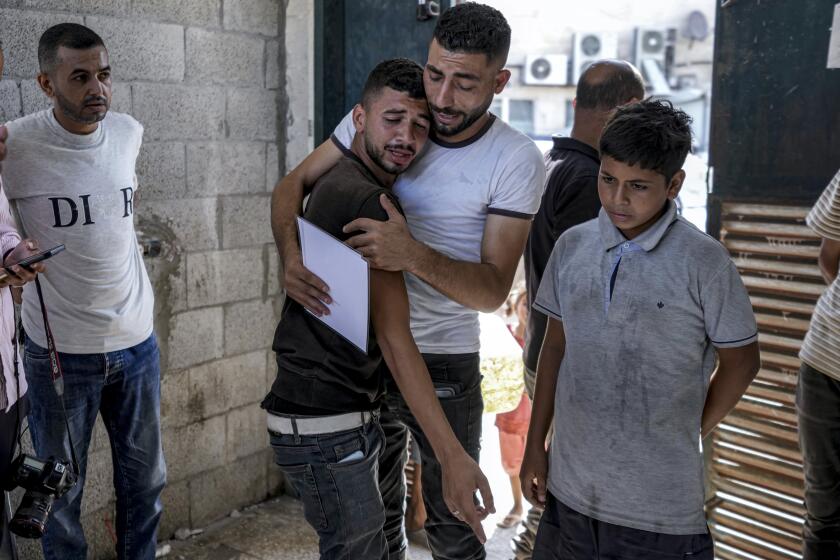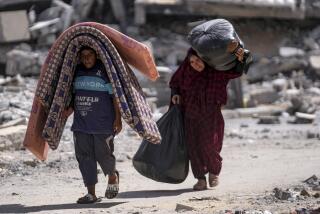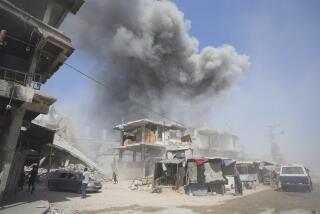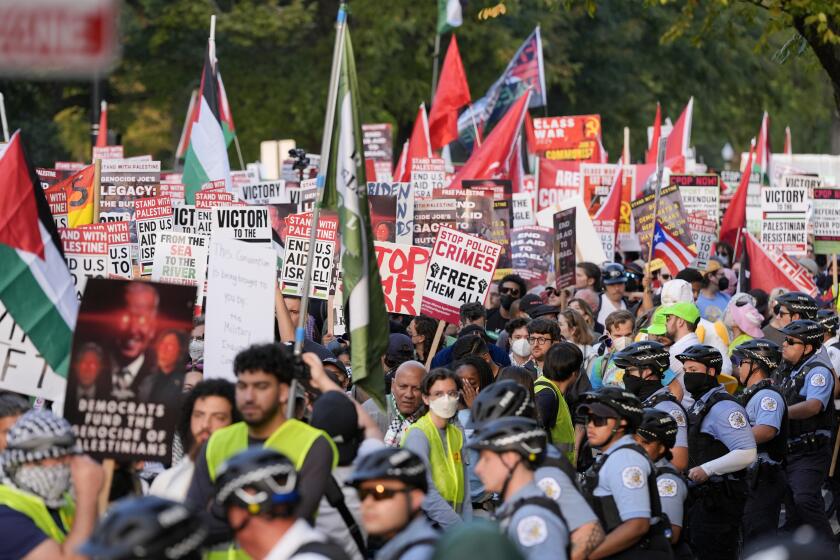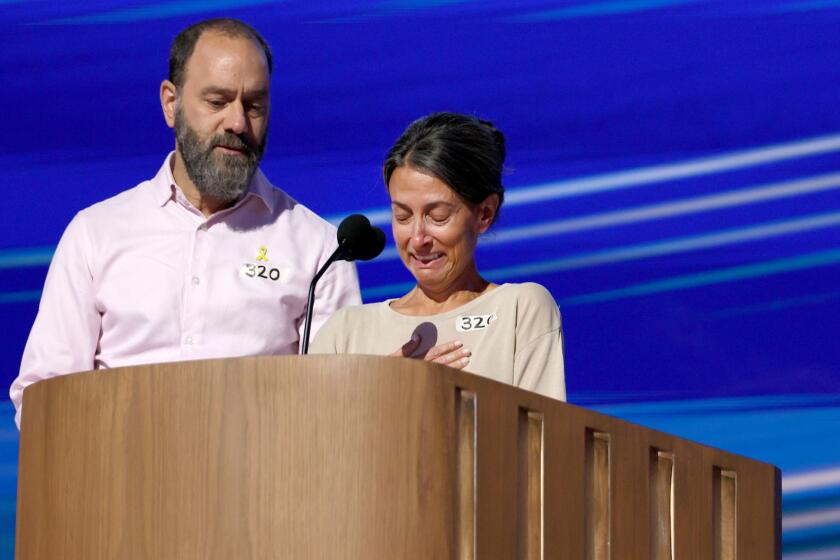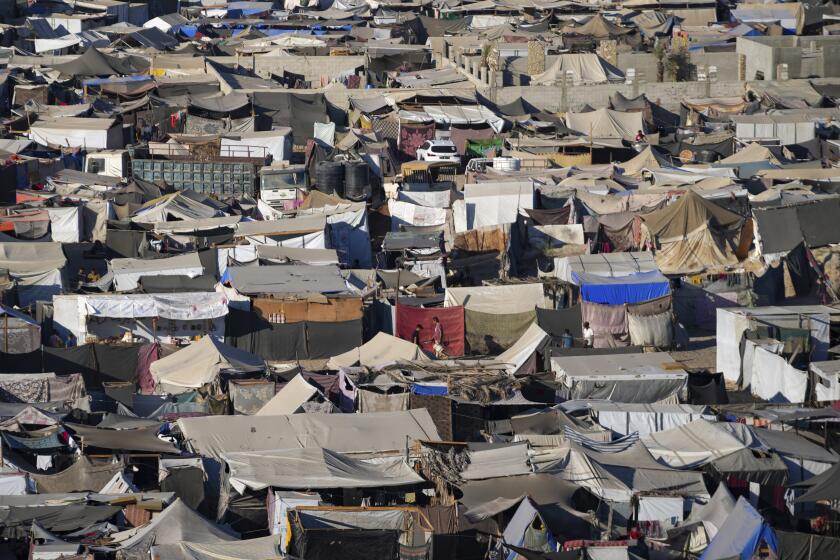Israel’s evacuation orders have displaced 90% of Gaza residents, U.N. says
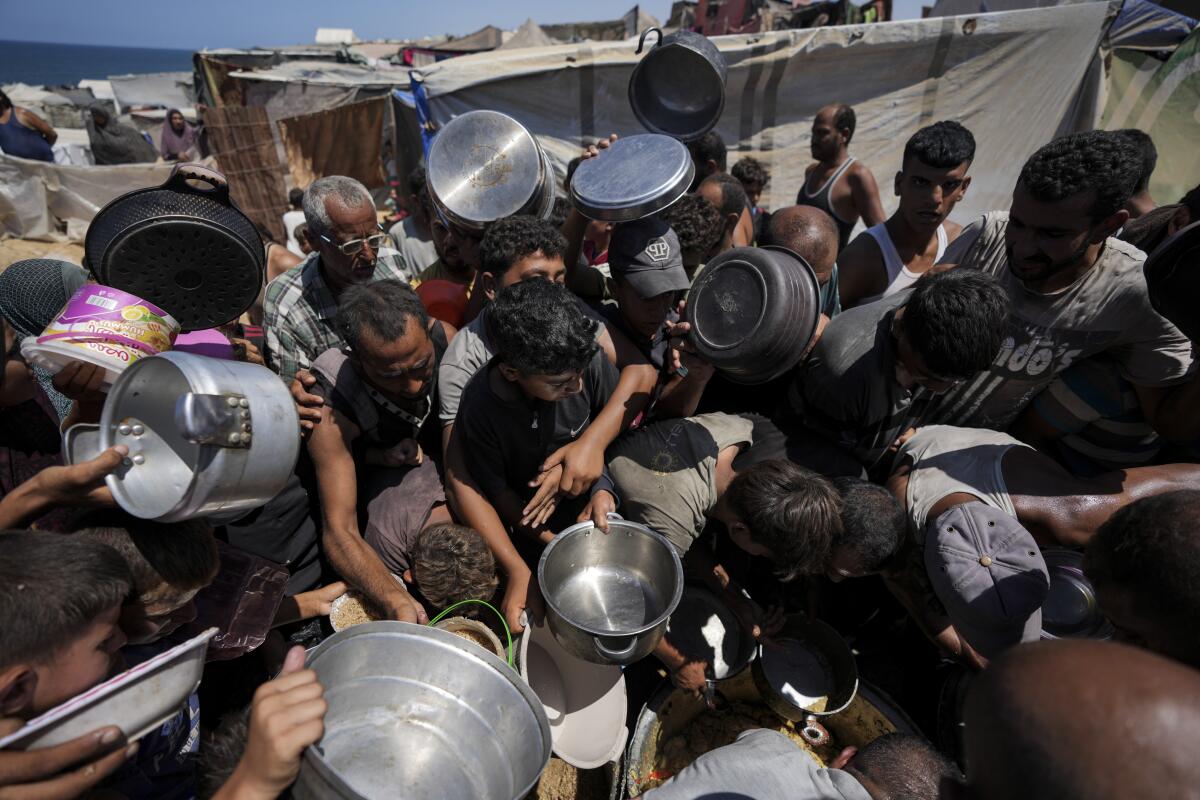
Successive Israeli evacuation orders, including 12 in August, have displaced 90% of the Gaza Strip’s 2.1 million residents since the Israel-Hamas war began in October, according to a top United Nations humanitarian official.
The news from the U.N. came as the United States, Egypt and Qatar mediated talks in Cairo aimed at salvaging a cease-fire deal and as families of hostages held in Gaza vented their anger at Israeli Prime Minister Benjamin Netanyahu for his failure to seal a truce that would free their loved ones.
In Gaza, Israeli evacuation orders are endangering civilians instead of protecting them, said Muhannad Hadi, the top United Nations humanitarian official for the Palestinian territory.
“They are forcing families to flee again, often under fire and with the few belongings they can carry with them, into an ever-shrinking area” that is crowded and unsafe, he said.
Civilians are being deprived of medical care, shelter, water wells and humanitarian supplies, “running from one destroyed place to another, with no end in sight,” he said.
Mohammad Abu Al-Qumsan lost his children, wife, and mother-in-law in an Israeli strike that hit a Gaza Strip apartment building while he was away.
Hadi said in a statement that international humanitarian law requires the protection of civilians. “The way forward is as clear as it is urgent: Protect civilians, release the hostages, facilitate humanitarian access, agree on a cease-fire.”
The evacuations are also the latest threat to U.N. personnel working in Gaza and affect humanitarian facilities, according to U.N. spokesperson Stephane Dujarric. He cited as an example that the U.N. World Food Program lost access to its warehouse in central Deir al Balah.
“This was the third and last operational warehouse in Gaza’s middle area,” Dujarric said. “Five community kitchens operated by WFP have also been evacuated, as the agency seeks new locations for them.”
Families of hostages meet with Netanyahu
The Hostages Family Forum, a group representing relatives of hostages taken in Hamas’ Oct. 7 attack on Israel, met with Netanyahu on Friday. The group said the premier reiterated his commitment to do everything in his power to bring their family members back alive.
“The word ‘alive’ limits this to a certain time frame,” said Yizhar Lifshitz, son of hostage Oded Lifshitz and whose mother was kidnapped and freed by Hamas in October.
More than 100 Israeli hostages remain in Gaza, including dozens who are presumed dead. Israeli troops recently recovered the bodies of six captives from an underground tunnel in southern Gaza. The revelation that the bodies were riddled with bullet wounds has increased domestic pressure on Netanyahu.
The war began Oct. 7, when Hamas and other militants stormed Israel, killed about 1,200 people — mostly civilians — and abducted about 250. The Israeli offensive launched in response has killed more than 40,000 Palestinians in Gaza, according to the local Health Ministry, which doesn’t say how many were militants or civilians.
The Cairo talks aimed at ending the war and avoiding a larger regional conflict have been constructive and will continue over the weekend, White House national security spokesman John F. Kirby said Friday. He countered reports that negotiations are near collapse as Hamas and Israel have major differences over Israel’s insistence that it maintain forces in two strategic corridors in Gaza. CIA Director William Burns and Brett McGurk, a senior advisor on the Middle East to President Biden, are leading the U.S. side of negotiations.
Iranian officials say their response to two assassinations blamed on Israel may be delayed.
Deadly Israeli airstrikes in Lebanon
In Lebanon, five Israeli airstrikes on Friday killed at least eight people, including a child and several Hezbollah militants, state media reported.
A drone strike in the town of Aita al-Jabal killed a 7-year-old along with one other person, the Lebanese Health Ministry said. The Israeli military said the strike killed Mohammad Mahmoud Najem, an operative in Hezbollah’s drone and rocket unit. The Lebanese militant group Hezbollah later confirmed Najem’s death and announced the deaths of four other members.
The Iranian-backed Hezbollah has been clashing almost daily with Israeli forces in the border region for more than 10 months. The clashes have killed more than 500 people in Lebanon — most of them militants but including more than 100 civilians and noncombatants — and 23 soldiers and 26 civilians in Israel.
Gaza wakes to gunfire
In the central Gaza Strip, heavy weapons and machine guns could be heard firing at daybreak near east Deir al Balah in a video shot by the Associated Press, with the streets nearly deserted. In the southern city of Khan Yunis, four people were killed in an early Israeli strike on their vehicle, Palestinian Civil Defense spokesperson Mahmoud Bassal said.
Bassal reported late Thursday that 24 people were killed the day before in multiple strikes across Gaza by the Israeli military, including in Gaza City in the north and Khan Yunis in the south.
Israel’s military said early Friday that it had killed dozens of militants during close-quarters fighting Thursday in the central and southern Gaza Strip. It said that in Khan Yunis, the fighting included strikes against areas from which projectiles were launched at southern Israel over the last week.
More to Read
Sign up for Essential California
The most important California stories and recommendations in your inbox every morning.
You may occasionally receive promotional content from the Los Angeles Times.
